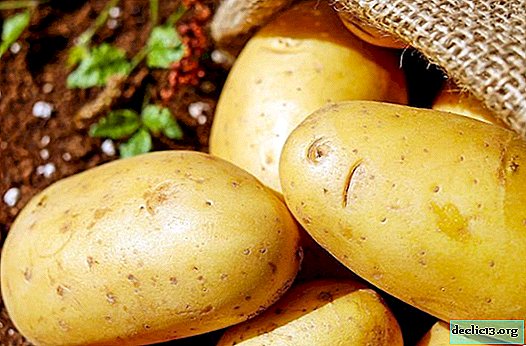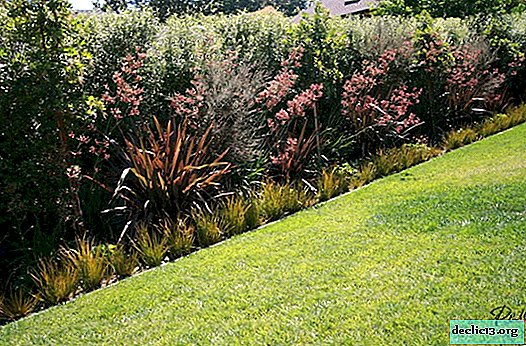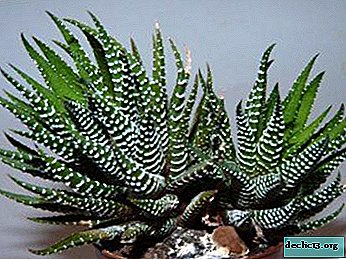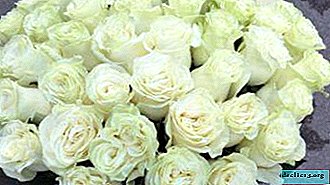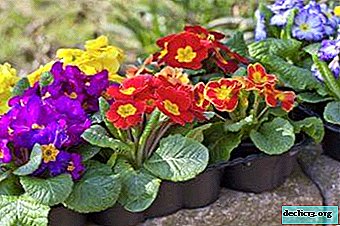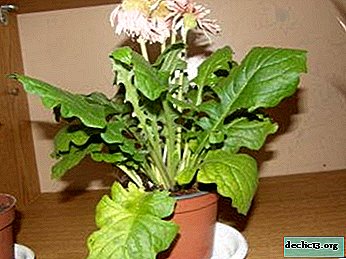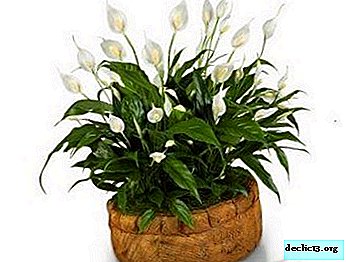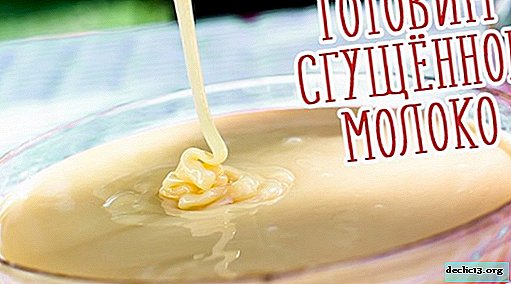All about Kaoda Orchid: flower photo, detailed description and proper care
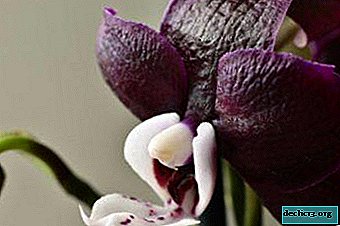
The Kaoda Orchid is a relatively young, but budding hybrid. Every year, the "family tree" of this orchid is replenished, its genealogical history develops, new varieties and species of this oriental miracle appear.
The history of the appearance of this species, its features, conditions, breeding methods, diseases and proper care of it will be discussed in our article. You can also watch a useful video on this topic.
Definition
Phalaenopsis Kaoda is the result of hybridization, a modern achievement of breeders. The flower belongs to the ancient family of orchids, it is an epiphyte that loves mountain ravines, moist forests, in nature grows on stones or is located on tree trunks and stumps. The homeland of all phalaenopsis is the Philippines, Australia, southeast Asia.
Detailed description
 This species is called the "black orchid." In fact, in the nature of phalaenopsis it is not black in color. The saturation, “density” of the dark shades of burgundy, beetroot, and violet produces the effect of the “blackness” of the color of Kaoda and its hybrid descendants. Petals are not translucent, but dense, harsh, as if coated with varnish.
This species is called the "black orchid." In fact, in the nature of phalaenopsis it is not black in color. The saturation, “density” of the dark shades of burgundy, beetroot, and violet produces the effect of the “blackness” of the color of Kaoda and its hybrid descendants. Petals are not translucent, but dense, harsh, as if coated with varnish.
The height of the stem reaches an average of 20 cm, the stem is completely hidden by leaves. The leaves are dark green in color, oval in shape, glossy, grow up to 22 - 25 cm in length. 8 - 10 cm in width. They can also be smaller, depending on the age of the orchid.
Peduncle appears from the sinus of the leaf, can branch, grows vertically. Usually Kaoda has two branched peduncles. Bears, as a rule, up to 8 - 12, sometimes more simultaneously opened flowers. Flowers in diameter usually grow to 4.5 cm. They may be slightly larger, depending on the clone, because within this variety there are 3 to 4 clonal varieties.
The flowers themselves are regular in shape with rounded petals, dense, textured, as if with leather embossing of a deep burgundy, sometimes beetroot color. There may be a thin white border at the edges of the petals. The lip is snow-white, on its surface there may be small maroon specks. The lip is bifurcated at the end.
ATTENTION: As such, this variety does not have a rest period. The orchid is ready to bloom year-round, but new flower stalks appear in spring or summer.Very fragrant. It is not known what this is connected with, but Kaoda's special aroma only at lunchtime.
History of occurrence
According to scientists, the phalaenopsis orchid was born several centuries ago, in the tropics of Asia. An unexpected discovery for Professor Carl Blume was an unknown flower, so similar to the "night butterflies". More than a hundred years passed, and only then scientists were able to "tame" the orchid, adapted it to our European climate. Orchid Kaoda - a hybrid new creation of scientists - breeders.
What is the difference from the rest of the species?
Flowers in their structure differ from other representatives of simple phalaenopsis. Petals and leaves are dense, harsh, covered with a waxy coating.
Subsorta: description and photo
There is one variety of Kaoda orchid. Below we give his description and photo.
Kaoda "Chocolate Drobes Twinkle"
The variety is translated as "flickering drops of chocolate", a monopodial epiphyte of medium size. Very fragrant flower, simply mesmerizes with a combination of brightness of smell and color. The flowers are large enough, saturated, dark violet, up to 5-7 cm. The stem grows up to 15-20 cm, it is covered with leaves. The leaves are strong, resilient, somewhat reminiscent of Mini Mark leaves - green, grow up to 15 cm in length. They may be smaller, depending on age. Unfortunately, this particular hybrid has no aroma.


Bloom
As you know, Kaoda does not have a certain rest period, it can bloom all year round. The growth of new shoots - peduncles begins in the spring or summer.
During flowering, Kaoda is not fertilized. Otherwise, there is a risk of dropping buds and accelerating flowering.
After it fades, you can arrange a small “respite” for the orchid lasting 2 to 3 weeks, this will be enough. At this time, watering is reduced and fertilizers can be omitted.
What to do if it does not blossom?
Kaoda Orchid prefers warm temperature. The best temperature for growth and flowering is 24 - 32 ° C in the summer and 16 - 22 ° C in the winter.
IMPORTANT: To stimulate flowering, an orchid needs a temperature drop of at least 4 - 6 ° C, plus a short rest period in winter.Care instructions
Seat selection
Phalaenopsis Kaoda is best placed on window sills from the west and eastTo avoid direct sun, it is dangerous for the orchid. It is desirable that the lighting does not deprive this special flower of soft, warm shades, leaving only dark silhouettes - spots, because the petals of Kaoda are dense, not transparent, they simply fade when the lighting is unfavorable.
Soil and pot preparation
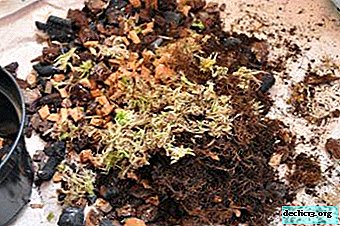 Pot. It is recommended to grow this plant in pots or in wooden rack baskets. The diameter of the pot is usually average, up to 12 cm.
Pot. It is recommended to grow this plant in pots or in wooden rack baskets. The diameter of the pot is usually average, up to 12 cm.- Substrate:
- The base is medium-sized pine bark or coconut chips.
- On the surface of the substrate, you can put moss - sphagnum for drying out the roots.
- Moss acts as an indicator for watering time. When it has dried to the “crunch”, after 1 - 2 days, the orchid needs to be watered.
- Good drainage is required for air circulation so that the roots do not rot.
- Peat is sometimes added to preserve the substrate from salinity.
Temperature
Orchid Kaoda loves warm and soft light, moderate temperature conditions are desirable. The most optimal temperature in the hot summer period is 24 - 32 ° C, in winter the permissible temperature range is 16 - 22 ° C.
Humidity
With regard to air humidity, this phalaenopsis is quite patient and plastic, but humidity below 40 - 45% is undesirable. Increase humidity in summer, regular flower spraying is recommended.. In this case, water should not be allowed to get on the flowers and buds.
TIP: You can humidify the air by pouring water into additional containers and placing them near the pots.Lighting
Lighting is standard, as for all phalaenopsis, partial shade, without direct sunlight. It blooms well and grows under completely uniform artificial lighting. In spring and summer. Bright diffused light.
Orchid does not tolerate direct bright sun. Do not expose leaves to burns; watch for lighting.
Watering
 Watering directly depends on the method of keeping the orchid and the season. When landing Kaoda on the block, you need to water every day, especially on hot summer days. If the orchid grows in a pot or in a basket, you need to water it once every 5 to 7 days. This variety is very resistant to drying and for a long time can be in an unpolished condition.
Watering directly depends on the method of keeping the orchid and the season. When landing Kaoda on the block, you need to water every day, especially on hot summer days. If the orchid grows in a pot or in a basket, you need to water it once every 5 to 7 days. This variety is very resistant to drying and for a long time can be in an unpolished condition.
During watering, carefully protect the rosettes and sinuses of the leaves so that water does not get there. Stagnation of water in these places can lead to decay and further death. Immediately after watering, you can put an orchid under the fan, then all excess moisture will evaporate and will not cause harm.
- In the spring and in the hot summer. Once a week, spilling soil with warm water on top of the pot, preventing the accumulation of water. Soaking in water is not recommended. Watering is best in the morning. Watering is necessary only when all the roots have become a uniform silver-gray color.
- Fall and winter. More rare and careful watering, about 1 time in 10-14 days.
Watch a video about proper orchid watering:
Top dressing
- Fertilizer is usually combined with irrigation to evenly distribute nutrients.
- Top dressing is applied every 2 to 3 weeks during the active growth of leaves and roots.
- It is better to use organic fertilizers.
- Flowering plants do not fertilize so that the buds do not fall off, and the orchid blooms longer.
- Once a month, we feed fertilizers for orchids, strictly following the instructions.
Watch the video about the proper feeding of orchids:
Transfer
We transplant an orchid when the substrate begins to decompose. If you planted an orchid in the bark, the "shelf life" of the soil usually expires after 2–3 years. A transplant is desirable in the case when the plant "sits" very tightly in the pot, it is crowded, the pot is "crowded" with roots on all sides.
Watch the video about the correct orchid transplant:
How to propagate?
At home, the Kaoda orchid propagates, like many phalaenopsis, with the help of lateral processes - “children” on stems or peduncles. It is important to observe a temperature of 25 ° C and a humidity of 60%. The process of separating the "kids":
- We choose a healthy adult, with a good root, large large leaves orchid.
- Important - reproduction should take place after flowering.
- In this case, the peduncle should still be fresh.
- With a sharp knife on the peduncle, the top is cut to the upper "sleeping" kidney, sprinkle the wound with charcoal.
- We transplant a new shoot into a pre-prepared small greenhouse with a substrate - sphagnum (you can use the aquarium).
- We stop watering for several days.
Watch a video about orchid propagation by children:
Diseases and Pests
 Spider mite - a real misfortune for our phalaenopsis. A hot shower will help here, spraying with various acaricides, the most harmless fitoverm. 3 to 4 treatments are required at weekly intervals.
Spider mite - a real misfortune for our phalaenopsis. A hot shower will help here, spraying with various acaricides, the most harmless fitoverm. 3 to 4 treatments are required at weekly intervals.- Suppurations form in the axils of the leaves, in the roots and on the peduncleif the flower is supercooled and gets a lot of fluid. Immediately transplant the orchid, change the substrate to fresh, reduce watering. Move the pot to a lighter and warmer place. If you find rotten root, cut out all rotten roots with a knife. It is recommended to sprinkle with cinnamon and grease with foundationazole.
To prevent orchid from pests and diseases, it is better to install pots on the trellis so that the infection is not transmitted during watering. It is important to disinfect pots and tools when planting and breeding. Copper sulfate is usually used for disinfection.
Prevention of various problems
How to prevent orchid diseases:
- The leaves became yellowish, lost their bright, saturated green color - weaken watering, adjust air humidity, obscure windows.
- If the leaves began to fall, then the humidity is insufficient, you have dried the air. And, perhaps, the substrate also lacks moisture. Spraying is required, additional watering.
- The leaves rot - this is a sign of improper care. Make sure that the leaves, sinuses, socket are not wet, and if wet, they must be carefully wiped with a dry cloth or blow dry.
Conclusion
Phalaenopsis - the favorites of the "public", the most diverse and demanding. Orchids Kaoda bright, dark purple, maroon. These majestic flowers add solemnity, a certain ceremoniality, even pomp to the house, office, fashionable apartment.

 Pot. It is recommended to grow this plant in pots or in wooden rack baskets. The diameter of the pot is usually average, up to 12 cm.
Pot. It is recommended to grow this plant in pots or in wooden rack baskets. The diameter of the pot is usually average, up to 12 cm. Spider mite - a real misfortune for our phalaenopsis. A hot shower will help here, spraying with various acaricides, the most harmless fitoverm. 3 to 4 treatments are required at weekly intervals.
Spider mite - a real misfortune for our phalaenopsis. A hot shower will help here, spraying with various acaricides, the most harmless fitoverm. 3 to 4 treatments are required at weekly intervals.